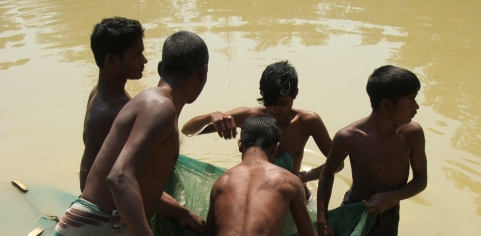Why is there always such a frantic rush in humanitarian response to a disaster, and a slow crawl in making people safe before the hazard strikes? This imbalance has been the norm for many decades.

There are signs that more work on reducing vulnerability (often now rebranded as its opposite: resilience) is being done to mitigate disasters, but not enough. And with climate change making hazards worse – more frequent or stronger (or both) there needs to be a very rapid swing in the direction of preparedness and prevention of disasters. Courting Catastrophe is looking at how the humanitarian sector needs to change to meet this challenge, with research in countries in Asia and Africa to develop new ways of acting
The overriding research objective is to critically examine the scope and practical ways in which humanitarian responses may contribute to adaptation to climate change. Specifically, the project seeks to:
- Enhance understanding of the long term implications of humanitarian interventions for efforts to build long term resilience and sustainable adaptation to climate change
- Identify lessons from current interventions and policy approaches, in particular regarding discrete humanitarian policy approaches that empower the voices of the vulnerable in decision making and address long term vulnerability
- Develop guidelines for how humanitarian interventions can better contribute to climate change adaptation in terms of use of information about complex climate and vulnerability contexts in operational decisions
- Build capacity among Norwegian research and humanitarian actors to collaboratively engage in action-oriented knowledge production regarding climate change adaptation